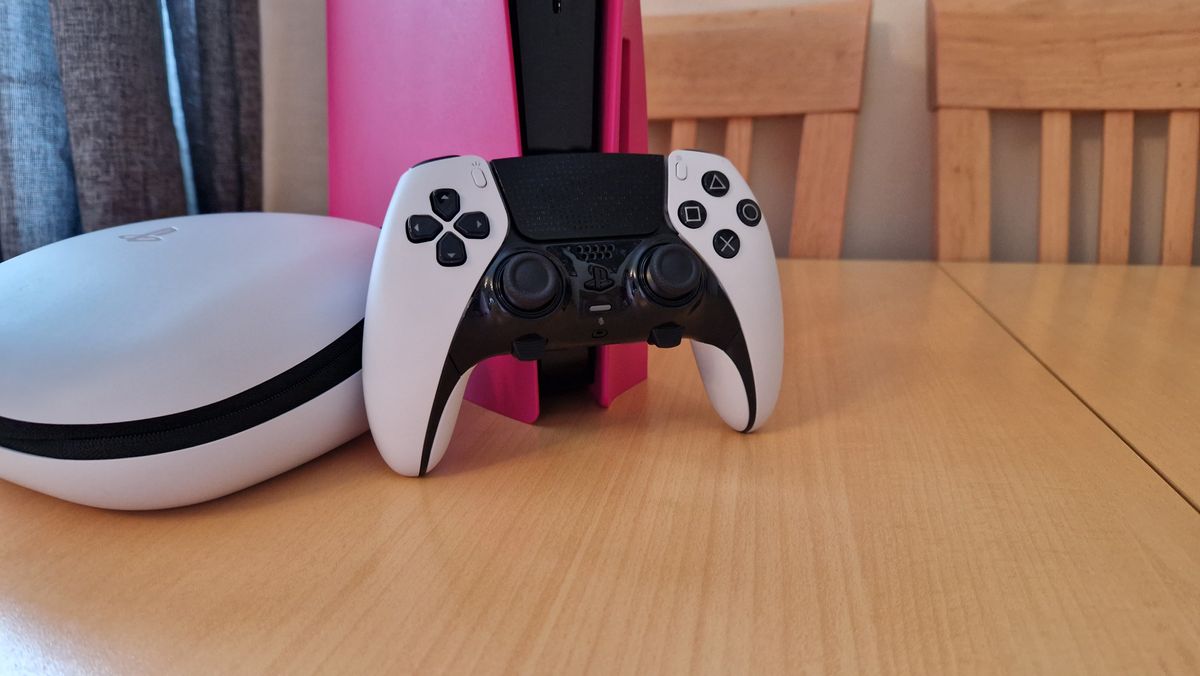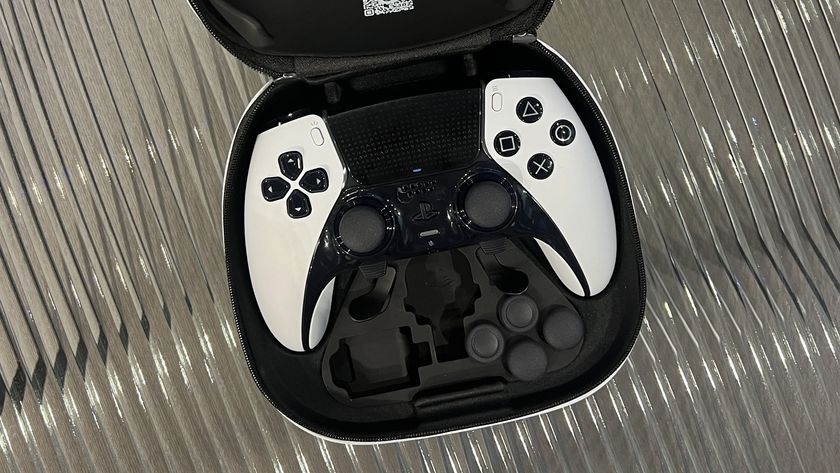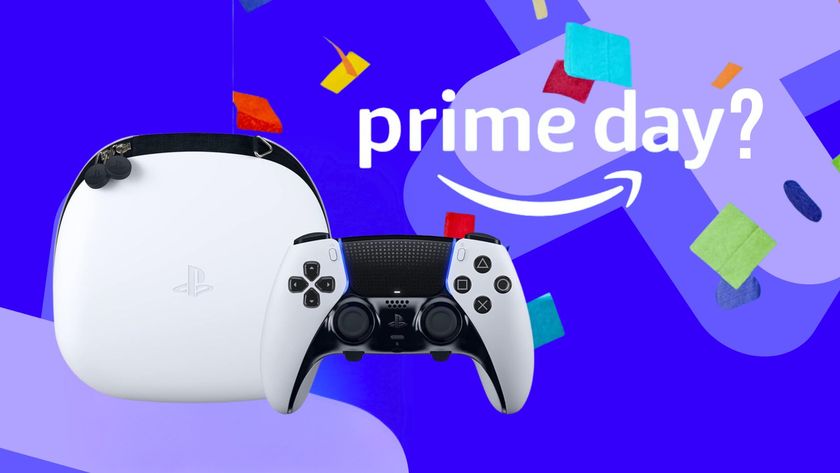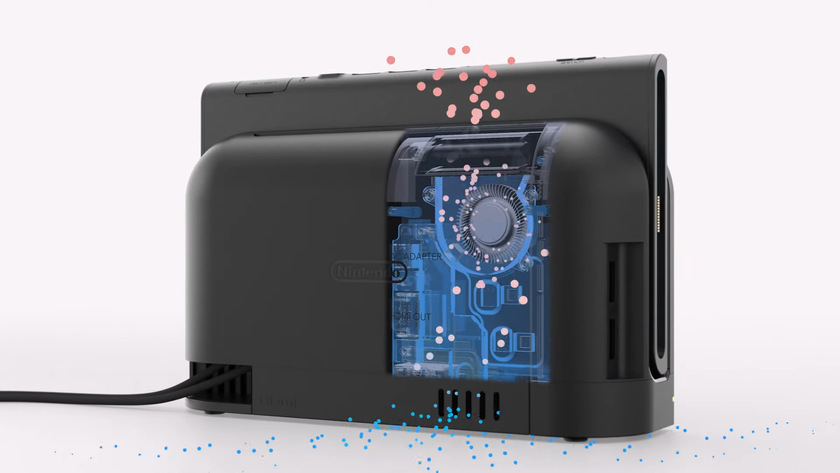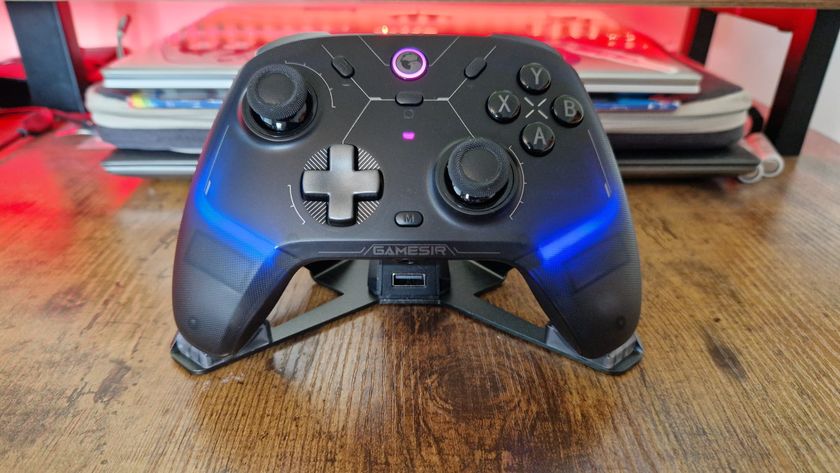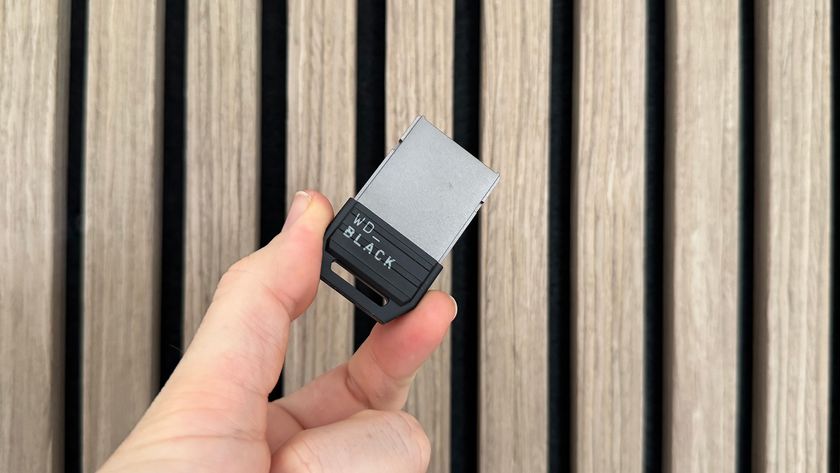12DOVE Verdict
The DualSense Edge is a premium-feeling controller for PS5. Whilst there are certainly great quality of life updates to be had here, the Edge doesn't truly fix the biggest issues with the DualSense. For the high cost, you can get a slew of third party controllers with more buttons and only a few less features.
Pros
- +
A more premium-feeling DualSense
- +
Ergonomic back buttons
- +
Intuitive software integration
- +
Good case
Cons
- -
Only two back buttons
- -
Competitors offer more functionality for the same price
- -
No real stick drift fix
- -
Poor battery life
Why you can trust 12DOVE
The DualSense Edge may be one of the most long-awaited additions into the PlayStation ecosystem in recent memory. After just shy of a decade in which Sony has out-sourced its pro controller production to officially licensed third parties, it's finally come to market with a home grown gamepad that seeks to fully capitalize on the promise of the DualSense.
Despite being the subject of a lot of hype, it's fair to say that the DualSense hasn't fully lived up to its potential. Haptic feedback, adaptive triggers, and a slew of bespoke PS5 features have all been overshadowed by widespread reports of stick drift, poor battery life, and a lack of support from third party games.
With an updated "pro" model coming to market two years into the PS5's life, there are many gamers who will be reassured by its premium, weighty feel. Whilst there are certainly great quality of life updates to be had here, the Edge doesn't truly fix the biggest issues with the DualSense. For that reason, I'm not sure it can be called the best PS5 controller, or that it warrants its lofty price of $199.99 / £199.99.
Design and Features
Right away, the DualSense Edge has a strikingly similar design to the stock PS5 controller. In the hand, however, it presents itself as a much more weighty, much more ergonomic gamepad. Perhaps most obviously, there are two "function" buttons below the analog sticks. These help to control the customisable profiles on the Edge, and work like hot keys to quickly switch between controller profiles and the like. On the back, you'll find two slots for swappable back buttons.
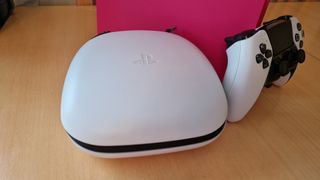
Inside an excellent hard case which offers great protection and houses all of the swappable components, you'll find two distinct back button options. One, is a set of longer paddles and the other is an equally comfortable set of half-circular pebbles. Both of these function just as well, and can be swapped out with ease.
The shinier outer shell on the controller's mid-section was more finger-smudge resistant than I expected, and PlayStation symbol textures on the R2 and L2 buttons gave the adaptive triggers a much more grounded and tactile feel compared to the DualSense. Speaking of those triggers, there are now three stop-levels that will allow you to personalise their actuation points.
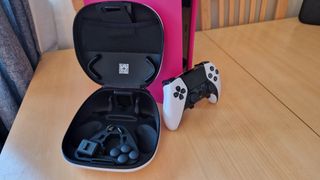
Also in the box, you get swappable stick caps which are reminiscent of older DualShock controllers. There's a threaded USB-C cable and locking mechanism if you want to use the controller in wired mode, too. Battery life is quoted to be "moderately shorter" than the original DualSense, and I definitely found this to be the case.
One bit of design I want to praise, in particular, is the rounded corners at the bottom of the grips. As someone who loved the rounded and comfortable grips of the DualShock 4, I've never really gelled with the harsh, sharper corners on the DualSense. These have never felt comfortable, and for those of use with larger hands, often leave pinkies feeling as unwelcome as they did on the DualShock 3. The DualSense Edge fixes that, however, and it's amazing how much more ergonomic the controller feels as a result.
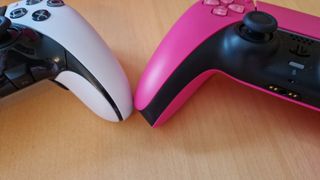
In terms of software integration, you get intuitive menus in the PS5 which feel consistent with the console's UI. This clever software really helps you get the most out of the Edge, and is definitely an added bonus you won't find with a third party controller.
Perhaps most importantly, the entire stick modules can now be swapped out so that should stick drift become a problem, they can be fully replaced. While this may seem like a good-faith builder to those who were met with stick drift issues in the past, I'm not sure it should be praised.
You can only buy stick replacements from Sony itself, and to my knowledge, the DualSense Edge uses the same potentiometer mechanisms we're used to. Hall Effect Sensors are a newer innovation in the controller world which completely negate any drift possibilities, but these haven't been used in the DualSense Edge. To me, the fact that you can now swap out stick modules on Sony's "premium" controller seems more like a temporary plaster over the wound - an admission of guilt that this is a problem people will continue to face.
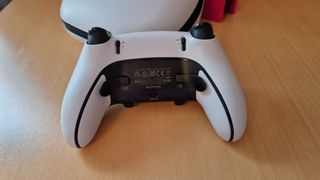
Performance
In just shy of a week with the DualSense Edge, I was pleasantly surprised with how much I enjoyed using it. Straight away I noticed how much more substantial and ergonomic it feels compared to the regular DualSense. Personally, I'd say this is down the extra weight and rounded grips.
Moreover, out of all the controllers with back buttons I've used, the DualSense Edge has two of the most comfortable attachments I've come across. The longer, grip levers in particular feel so easy to use because they sit right where my fingers naturally rest. They're raised slightly from the grips themselves though, which makes them easier to press than the buttons on the Nacon Revolution Unlimited, for example.
As great as these buttons feel, I can't help but think they're a wasted opportunity. The main reason I'd go in for one of the best PC controllers, for example, is to get as much extra functionality as possible. With only two additional buttons here, I really didn't find I was getting as much help as with other controllers that have four. I found this was certainly the case in first person shooters like Sniper Ghost Warrior Contracts 2, and Crytek's PC-optimized multiplayer, HUNT: Showdown.
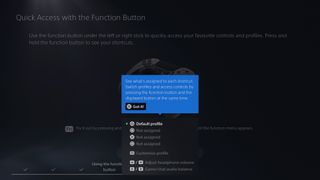
To my surprise, even first party exclusives like God of War Ragnarok and Horizon Forbidden West suffered in a similar way. All the D-pad controls in both games were screaming out for back button mapping, but I felt I couldn't compromise on more important gameplay actions assigned to face buttons. For this reason, I wish I was getting more controller for the money.
You'll be glad to know that software integration is one of the true areas that the DualSense Edge excels in. While other pro controllers have official Sony licensing, all of their software is withheld to mobile apps, or PC software. After wrapping your head around the dedicated PS5 menus for the DualSense Edge however, it's exceedingly simple to change controller profiles. The options here are brilliant, and very thorough. You can change button assignments, fine tune stick sensitivity and dead zones, you can even adjust haptic levels and adaptive trigger resistance (which is particularly great when some games like Deep Rock Galactic have those options set to "all" or "nothing"). Changing profile on the fly is extremely easy thanks to the function buttons, and that can't be said of many pro controllers.
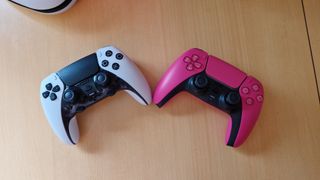
Should you buy the DualSense Edge?
The DualSense Edge feels like the next generation controller the DualSense promised to be. Being able to fine tune the DualSense's best features mean they've never felt better in games that support them. Unfortunately, I haven't had long enough with the Edge to test the lifespan of the sticks, but regardless of how they last, I'm not convinced the DualSense Edge is worthy of its price, and that's why I find it difficult to recommend.
For $200 / £200 in the controller market, there is an emerging pantheon of options for PS5, especially if you're looking for the competitive "Edge" that Sony says this pad will give you. The Razer Wolverine V2 Pro, the Victrix Pro BFG, and even the Scuf Reflex, will all give you more buttons for around the same price. Admittedly, the Wolverine V2 Pro will set you back more, but you do get an additional six buttons for your money.
If you can forgo the clever software integration, which, is more of an added bonus, I find it much easier to recommend those controllers. Not least, because they'll work with PC as well as PS5, and they're made by brands that have no reputations for stick drift or hardware degradation.
How we tested the DualSense Edge
The DualSense Edge was my main PS5 controller for the best part of a week before this review. Ideally, I'd have like a little longer with it to really test out the longevity of the sticks and other components, but we'll be sure to update this review in the coming months if problems arise from more playtime.
To test the extra functionality of the DualSense Edge, and how it would aid me in playing PS5 games, I tried to experience as many genres as possible with it. In terms of multiplayer first person shooters, I played HUNT: Showdown. For first person action and stealth, I played Sniper Ghost Warrior Contracts 2, and for a higher octane movement game, I played Rollerdrome. To see how the controller felt in the PS5's exclusive library, I played God of War Ragnarok, and Horizon Forbidden West. I played all of these with a mix of controller configurations, and with various swappable parts. I spent a fair amount of time in the profile menus trying as many fine tunings and adjustments as possible, too.
I compared my experiences with the controller to other pro controllers I've owned or had in to test. If you'd like to know more about our Holistic approach to testing gaming tech, you can read more in our Hardware Policy.
Want to jazz up your PS5? Check out the best PS5 accessories, or the best TV for PS5 and Xbox Series X.
One of my earliest memories is playing SuperMario64 and wondering why the controller I held had three grips, but I only had two hands. Ever since I've been in love with video games and their technology. After graduating from Edinburgh Napier University with a degree in Journalism, I contributed to the Scottish Games Network and completed an Editorial Internship at Expert Reviews. Over the last decade, I’ve been managing my own YouTube channel about my love of games too. These days, I'm one of the resident hardware nerds at 12DOVE, and I take the lead on our coverage of gaming PCs, VR, controllers, gaming chairs, and content creation gear. Now, I better stop myself here before I get talking about my favourite games like HUNT: Showdown, Dishonored, and Towerfall Ascension. Location: UK Remote
